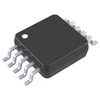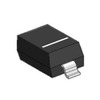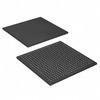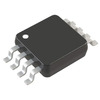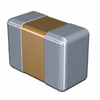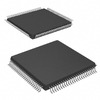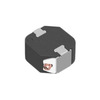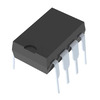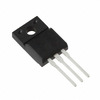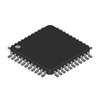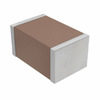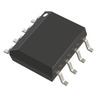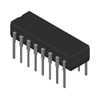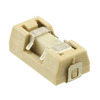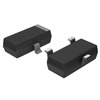SINAD
In radio communications, making sure that signals are clear and reliable is very important. Whether it's for emergency services, military operations, or everyday broadcasts, the performance of radio receivers is needed. One way that engineers and technicians check how well these receivers work is by using SINAD, which stands for Signal to Noise and Distortion Ratio. SINAD is a measurement that shows how well a receiver can produce a clear signal, even when there's a lot of noise and distortion. This article will explain what SINAD is, why it matters, and how it is measured and used in different communication systems.Catalog
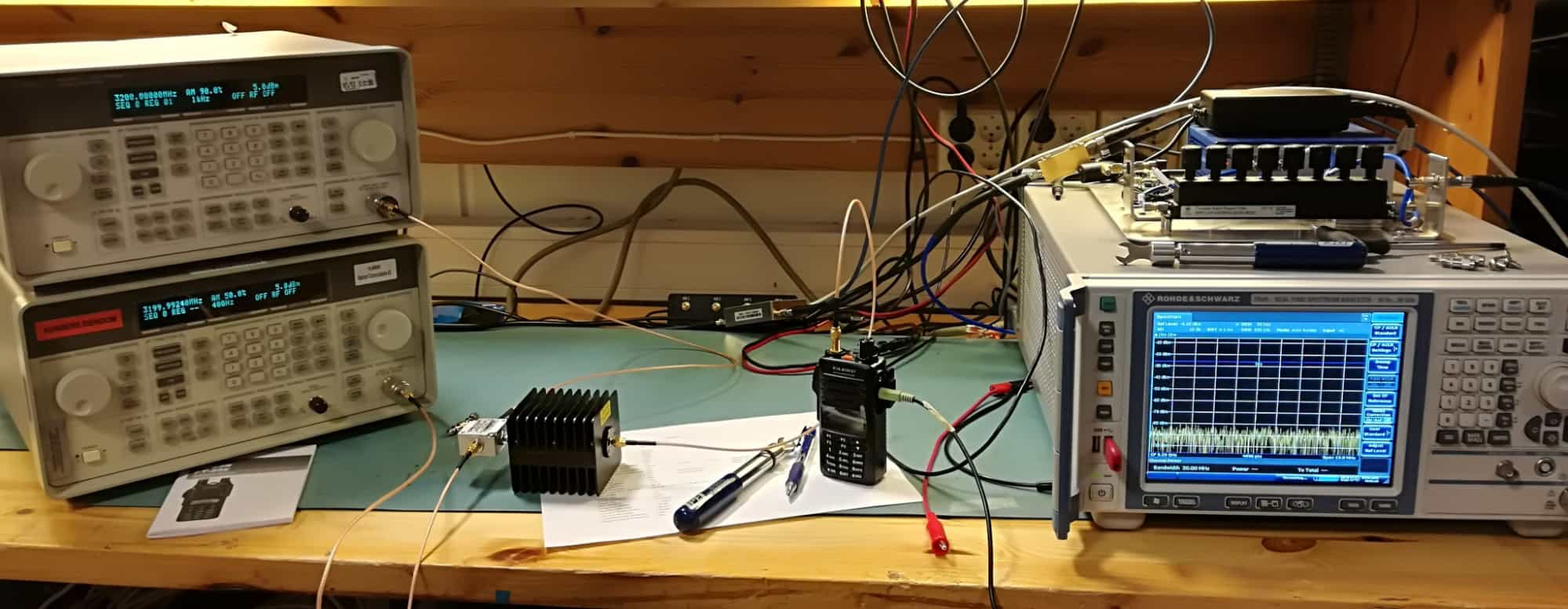
Figure 1: SINAD Testing Setup
What Is SINAD?
SINAD (Signal to Noise and Distortion) is a key measurement that helps determine how well radio receivers work by checking their ability to produce a clear signal even when there is noise and distortion. SINAD is calculated by comparing the strength of the signal along with the noise and distortion to the noise and distortion alone. The result is usually given in decibels (dB).
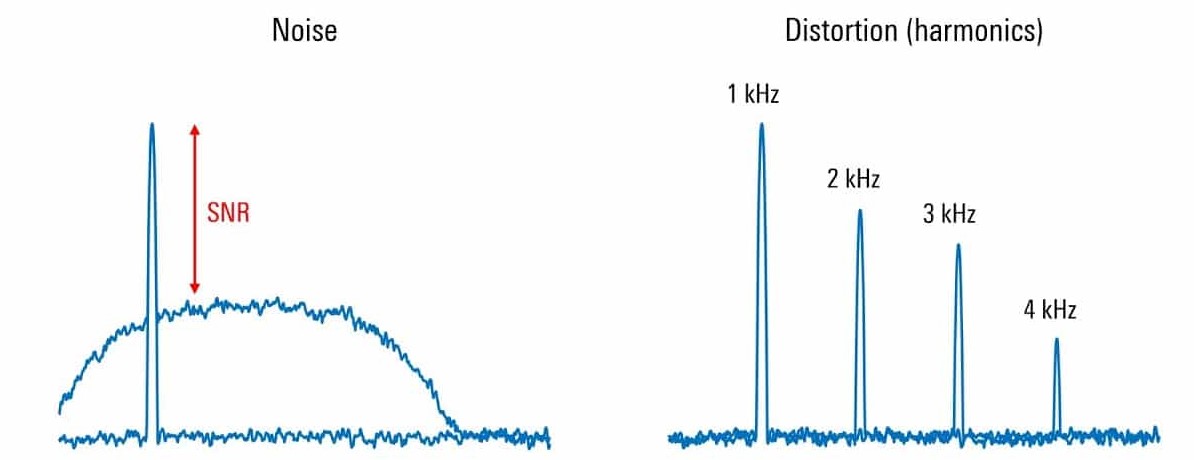
Figure 2: Signal to Noise and Distortion (Harmonics) Graph
When SINAD values are higher, it means the receiver can pick up weaker signals more clearly, making it more sensitive and capable of delivering better sound or data. SINAD is commonly used in systems like FM, VHF, UHF, and sometimes AM and SSB, to make sure the communication is reliable.
In the design and testing of radio equipment, SINAD helps engineers adjust receiver circuits so they work well, even in places with a lot of interference or where signals are weak. This ensures that the receiver performs effectively in various situations.
Why SINAD Is Important?
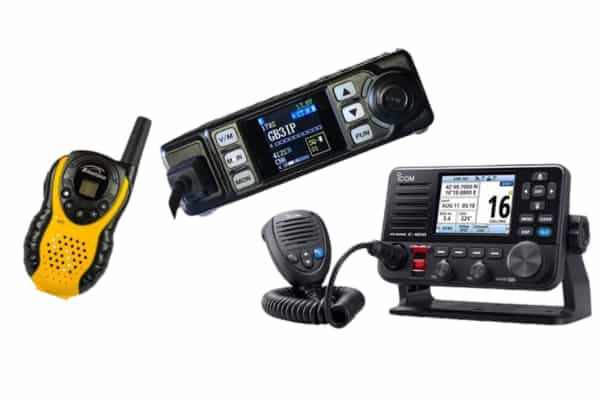
Figure 3: Radio Devices Used For SINAD Measurement
SINAD (Signal-to-Noise and Distortion Ratio) is important because it provides a way to measure a radio receiver's performance by combining both noise and distortion into one simple number. This measurement is helpful because it makes it easier to evaluate how well the receiver can handle signals, especially in tough environments.
When checking a radio receiver, SINAD shows how well the device can manage weak signals when there’s interference. This ability is very important in situations where clear signals are a must, such as in emergency services, military communications, or any situation where reliable radio transmission is needed.
By bringing together different types of signal problems into one measurement, SINAD allows engineers and technicians to quickly understand how well the communication system is working. This quick and accurate understanding is needed to make sure the system works as it should in real-world conditions, where different types of interference can seriously affect signal quality.
SINAD's role in giving a simple measure of performance makes it very useful for keeping and improving radio communication systems, making sure they stay dependable in situations where they are needed. This measure's importance lies not only in its ability to check current system performance but also in helping to find and fix potential problems before they cause issues with communication.
SINAD Measurements and Receiver Sensitivity
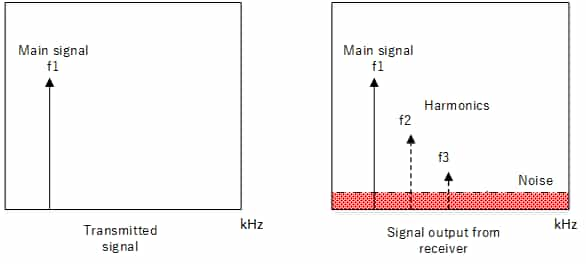
Figure 4: Signal And Harmonics Output Comparison
SINAD (Signal-to-Noise and Distortion ratio) is a useful measurement to check how well a radio receiver can pick up and process weak signals, even when there is noise and distortion. Receiver sensitivity is about how well a radio receiver can pick up weak signals clearly, which matters a lot in situations where the signals are weak or when there's interference.
SINAD is particularly helpful because it takes into account both noise and distortion. Unlike the Signal-to-Noise Ratio (SNR), which only looks at noise compared to the signal, SINAD also considers distortion, giving a more complete picture of how well the receiver is performing.
Understanding SINAD means looking at how well a receiver can separate the desired signal from unwanted noise and distortion. When measuring SINAD, both the signal power and the combined power of noise and distortion are considered. A higher SINAD value means the receiver can handle weak signals better, with less impact from noise and distortion.
Receiver sensitivity is influenced by several factors, including the Noise Figure (NF), which measures the amount of noise added by the receiver's electronics, and the Noise Floor, which is the lowest signal level that can be detected above the system's inherent noise. Another factor is Reciprocal Mixing, which is the interference caused when strong signals mix with the local oscillator noise, making it harder for the receiver to handle weak signals.
SINAD is usually measured by sending a known signal to the receiver and then measuring the output to see how much noise and distortion are present. This measurement provides a single value that can be used to compare the performance of different receivers or to see how well a receiver will work in different situations.
Understanding SINAD
Signal-to-Noise and Distortion Ratio (SINAD) is a measurement that helps us understand the quality of a signal in communication and audio systems. SINAD is measured in decibels (dB) and tells us how much the original signal has been affected by noise and distortion.
Definition and Formula
SINAD is defined as the ratio between the total power of a signal (which includes the desired signal, noise, and any distortion) and the power of just the noise and distortion. The formula for calculating SINAD is:
![]()
This formula compares the combined power of the signal, noise, and distortion with the power of the noise and distortion alone. The result is shown in decibels, which gives us an idea of the overall quality of the signal. A higher SINAD value means better signal quality because it shows that the desired signal is stronger compared to the noise and distortion.
Power Ratio, Not Voltage Ratio
SINAD is a power ratio, not a voltage ratio. This is important to understand because power and voltage are related differently in electrical systems. Power is connected to the square of the voltage, meaning small changes in voltage can lead to big changes in power. Therefore, when measuring SINAD, we focus on power to accurately reflect the impact of noise and distortion on the signal.
Measuring SINAD helps us evaluate how well a system can reproduce the original signal without adding too much noise or distortion. A high SINAD value indicates that the system is doing a good job of keeping the original signal clear and accurate.
In everyday use, SINAD is found in areas like audio engineering and telecommunications, where maintaining the quality of the signal is important. For example, in audio systems, a higher SINAD value means that music or speech is reproduced with less distortion and background noise, leading to a clearer and more enjoyable listening experience.
Basic SINAD Measurement Techniques
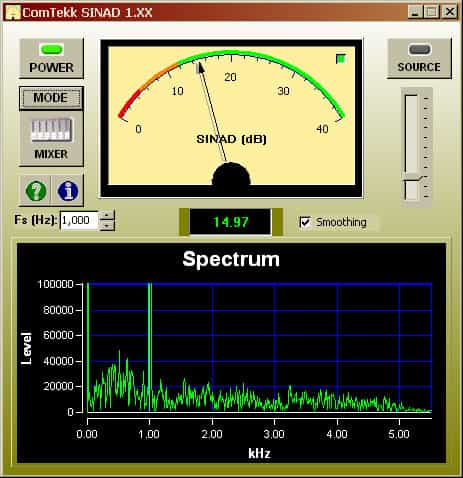
Figure 5: SINAD Measurement Using Audio Tone
To measure SINAD, a signal modulated with an audio tone (usually 1 kHz) is fed into the radio receiver. The receiver’s output, which includes the original signal, noise, and distortion, is then analyzed. The audio signal is passed through a notch filter that removes the 1 kHz tone, leaving behind only the noise and distortion. The SINAD value is then calculated using the measured power levels of the total signal (signal + noise + distortion) and the remaining noise and distortion after filtering.
While the electrical output at the receiver’s audio output terminals is the most common point for measurement, another approach involves using a transducer to convert the audio from the loudspeaker back into an electrical signal, ensuring that any speaker-induced distortion is also accounted for.
How to Measure SINAD?
There are two main ways to measure SINAD: using separate test equipment or using specialized SINAD meters.
Using Separate Test Equipment involves measuring the different parts needed to calculate SINAD by hand. This method requires several tools, like signal generators, oscilloscopes, and spectrum analyzers, to measure noise, distortion, and signal levels separately. While it can be accurate, it takes a lot of time and can lead to mistakes, especially with complex measurements.
Specialized SINAD Meters are devices made just for measuring SINAD. These meters combine all the needed circuits into one device and can be connected directly to radio receivers. This makes the measurement process easier by automatically calculating SINAD based on the
signals going in and out. Using SINAD meters makes the process faster and reduces the chance of errors.
How the Measurement is Done
Start by measuring the noise and distortion at the receiver's output when no signal is present. This step sets the baseline levels of noise and distortion, which are needed for an accurate SINAD measurement. Next, apply a known signal to the receiver's input. Slowly increase the signal level until the output level rises by 12 dB. This step helps determine the point where the signal is clear enough to be measured above the noise and distortion. Finally, record the signal level needed to get the 12 dB output increase. This signal level might be as low as 0.25 microvolts, depending on how sensitive the receiver is.
SINAD measurements are important for checking how well radio receivers work, especially in places with lots of noise and distortion. By accurately measuring SINAD, engineers can see how well a receiver can keep the signal clear, which is very important for reliable communication.
Using specialized SINAD meters makes the measurement process more accurate and less complicated, making it easier for engineers to get reliable results.
SINAD Measurement Filters
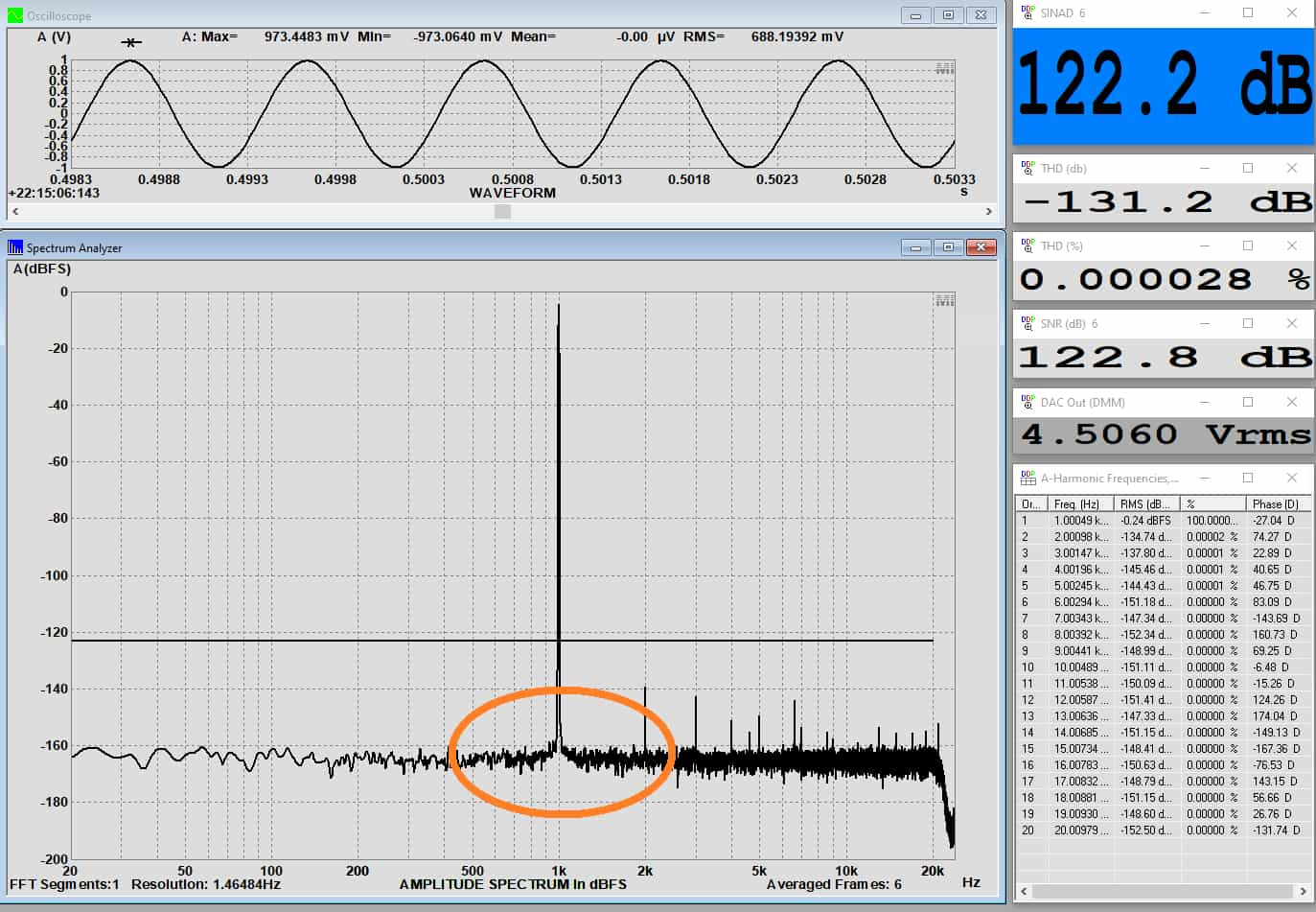
Figure 6: SINAD Measurement Using Notch Filter
In SINAD (Signal-to-Noise and Distortion) measurement, the notch filter is used to remove the tone from the signal, which is necessary for accurate analysis. The filter's bandwidth directly affects how well it can isolate the tone without impacting the surrounding noise and distortion.
Ideally, the filter should remove the tone without altering noise and distortion, but a limited bandwidth can lead to some reduction in these unwanted components as well.
Standards like those from the European Telecommunications Standards Institute (ETSI) specify that for a 1 kHz tone, the filter should reduce it by at least 40 dB while keeping the noise and distortion mostly unaffected.
The filter needs to balance its bandwidth to effectively separate the tone from noise and distortion. A filter that’s too wide may not fully isolate the tone, while one that’s too narrow might reduce both the tone and some of the noise and distortion, leading to inaccurate SINAD readings.
SINAD Specifications
Signal-to-Noise and Distortion Ratio (SINAD) is an important measure found in the technical details of radio communication equipment, particularly those operating in the Very High Frequency (VHF) and Ultra High Frequency (UHF) bands. SINAD shows the relationship between the total power of a signal (including noise and distortion) and the power of just the noise and distortion. This measure is useful for understanding how well a radio receiver works and its overall quality.
A typical specification might say, "Receiver sensitivity = 0.3 µV at 12 dB SINAD." This means that the receiver can achieve a 12 dB SINAD with an input signal as low as 0.3 microvolts. Simply put, the lower the input signal needed to reach a 12 dB SINAD, the more sensitive the receiver is. This sensitivity shows how well the receiver can detect weak signals, which is very helpful in communication systems where signal strength can change a lot.
Applications of SINAD Measurements
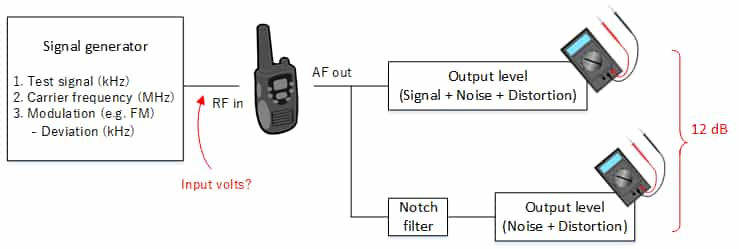
Figure 7: SINAD Measurement Process Diagram
Receiver Sensitivity
SINAD is mainly used to measure how sensitive a radio receiver is. This measurement helps ensure that the receiver meets the required performance standards. During testing and the design of the radio frequency (RF) circuit, SINAD is used to check that the receiver can detect and process signals well, even when the signals are weak. A standard SINAD value of 12 dB is often used, which corresponds to a 25% distortion level when a 1 kHz tone is used as the modulating signal. This distortion level serves as a common point for evaluating the receiver’s sensitivity.
Receiver Blocking
SINAD also helps to check how well a receiver can handle strong signals that are not on the desired channel, known as receiver blocking. In this case, a reference SINAD level is first set with a clean signal. Then, an off-channel signal is introduced, and its strength is slowly increased. The point at which the SINAD level drops shows how the receiver reacts to blocking. This measurement helps engineers understand how well the receiver can keep working correctly when faced with strong, unwanted signals that could otherwise cause problems in communication.
Adjacent Channel Rejection
Another use of SINAD is in checking how well a receiver can reject signals from nearby channels. In this process, an interfering signal is placed on a nearby channel, and the SINAD level is measured. The strength of the interfering signal is then increased until the SINAD drops to the reference level. This measurement shows the receiver's ability to reject signals from nearby channels, which is helpful in situations where many signals are present, such as in crowded radio spectrums. A receiver with good adjacent channel rejection can ignore or reduce the effect of nearby signals, allowing for clear communication.
Conclusion
SINAD (Signal to Noise and Distortion Ratio) is more than just a technical term—it’s a helpful way to understand how well a radio receiver can deal with real-world communication problems. SINAD gives engineers and technicians a simple number that shows how well a receiver can keep signals clear, even in noisy and difficult conditions. From checking how sensitive a receiver is to evaluating how well it can filter out unwanted signals, SINAD helps in the design, testing, and maintenance of reliable radio systems. As technology continues to develop, understanding and using SINAD measurements will remain a valuable part of making sure that communication systems work as they should, now and in the future.
Frequently Asked Questions [FAQ]
1. What tells us the frequency where SINAD is 3 dB lower than the best case value?
The frequency where SINAD is 3 dB lower than the best-case value shows the point where the receiver’s performance starts to drop off. This frequency helps to identify the range over which the receiver can still work well before noise and distortion begin to interfere with the signal quality.
2. What does 12dB SINAD mean?
A 12 dB SINAD means that the strength of the signal, when combined with noise and distortion, is 12 decibels higher than just the noise and distortion alone. This level is commonly used as a standard to check how well a radio receiver can pick up a clear signal. It shows that the signal is strong enough compared to the noise and distortion to be usable.
3. How do you calculate ENOB from SINAD?
To find the Effective Number of Bits (ENOB) from SINAD, you can use this formula: ENOB = (SINAD - 1.76) / 6.02. This formula converts the SINAD value, usually measured in decibels, into the number of bits that represent how well an analog-to-digital converter (ADC) can turn an analog signal into a digital one.
4. How is SINAD measured in cellular and mobile communication?
In cellular and mobile communication, SINAD is measured by sending a known signal into the receiver and then checking the output to see how much noise and distortion are present along with the signal. This process helps to understand how well the receiver can handle signals in situations where there might be interference, which is important for keeping communication clear in mobile networks.
5. What is SINAD in ADC?
SINAD in an Analog-to-Digital Converter (ADC) refers to the ratio of the total signal, which includes noise and distortion, to just the noise and distortion alone. This measurement tells us how well the ADC can convert an analog signal into a digital one, with higher SINAD values meaning better performance and less interference from noise and distortion.
About us
ALLELCO LIMITED
Read more
Quick inquiry
Please send an inquiry, we will respond immediately.
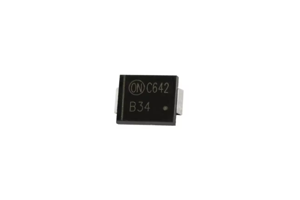
MBRS340T3G Comprehensive Guide: Specifications, Applications and Installation Tips
on August 27th
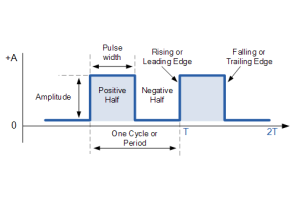
Non-Sinusoidal Waveforms: Square, Rectangular and Pulsed Waveforms
on August 27th
Popular Posts
-

What is GND in the circuit?
on January 1th 3036
-

RJ-45 Connector Guide: RJ-45 Connector Color Codes, Wiring Schemes, R-J45 Applications, RJ-45 Datasheets
on January 1th 2607
-

Fiber Connector Types: SC Vs LC And LC Vs MTP
on January 1th 2162
-

Understanding Power Supply Voltages in Electronics VCC, VDD, VEE, VSS, and GND
on November 13th 2065
-

Comparison Between DB9 and RS232
on January 1th 1789
-

What Is An LR44 Battery?
Electricity, that ubiquitous force, quietly permeates every aspect of our daily lives, from trivial gadgets to life-threatening medical equipment, it plays a silent role. However, truly grasping this energy, especially how to store and efficiently output it, is no easy task. It is against this background that this article will focus on a type of coin cell battery that may seem insignificant on the...on January 1th 1754
-

Understanding the Fundamentals:Inductance Resistance, andCapacitance
In the intricate dance of electrical engineering, a trio of fundamental elements takes center stage: inductance, resistance, and capacitance. Each bears unique traits that dictate the dynamic rhythms of electronic circuits. Here, we embark on a journey to decipher the complexities of these components, to uncover their distinct roles and practical uses within the vast electrical orchestra. Inductan...on January 1th 1704
-

CR2430 Battery Comprehensive Guide: Specifications, Applications and Comparison to CR2032 Batteries
What is CR2430 battery ?Benefits of CR2430 BatteriesNormCR2430 Battery ApplicationsCR2430 EquivalentCR2430 VS CR2032Battery CR2430 SizeWhat to look for when buying the CR2430 and equivalentsData Sheet PDFFrequently Asked Questions Batteries are the heart of small electronic devices. Among the many types available, coin cells play a crucial role, commonly found in calculators, remote controls, and ...on January 1th 1640
-

What Is RF and Why Do We Use It?
Radio Frequency (RF) technology is a key part of modern wireless communication, enabling data transmission over long distances without physical connections. This article delves into the basics of RF, explaining how electromagnetic radiation (EMR) makes RF communication possible. We will explore the principles of EMR, the creation and control of RF signals, and their wide-ranging uses. The article ...on January 1th 1618
-

Comprehensive guide to hFE in transistors
Transistors are crucial components in modern electronic devices, enabling signal amplification and control. This article delves into the knowledge surrounding hFE, including how to select a transistor's hFE value, how to find hFE, and the gain of different types of transistors. Through our exploration of hFE, we gain a deeper understanding of how transistors work and their role in electronic circu...on November 13th 1562



